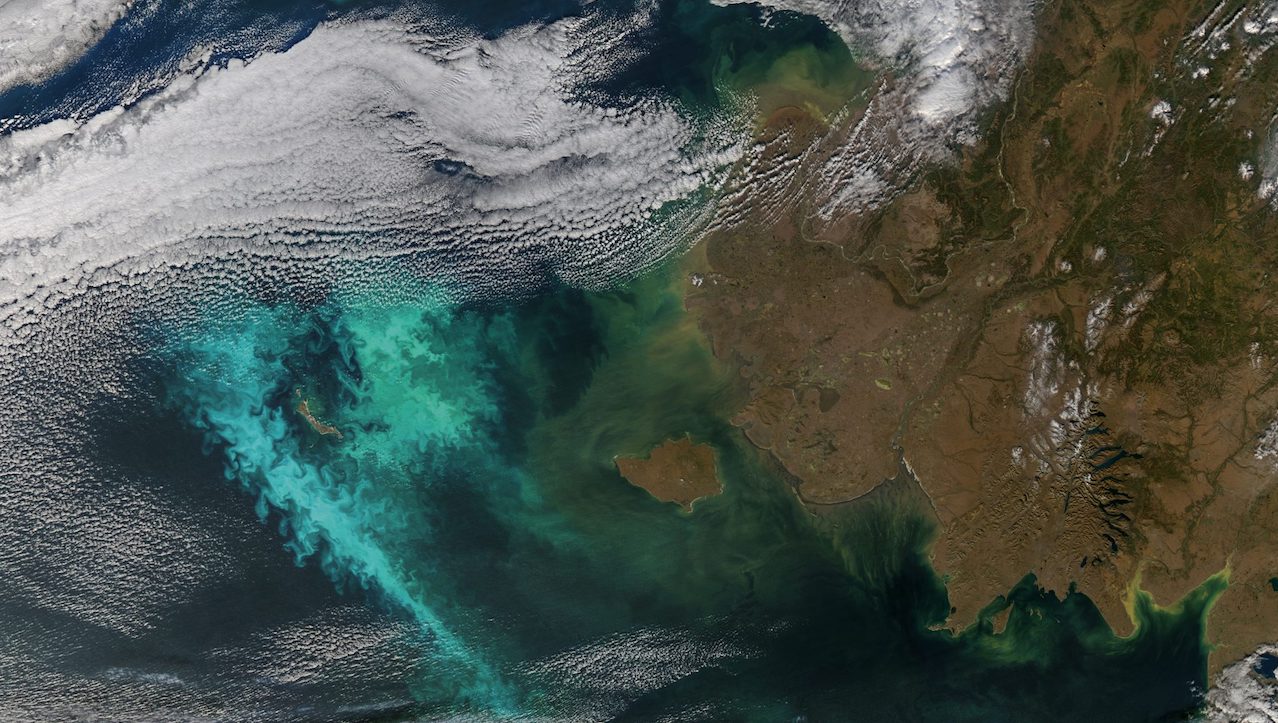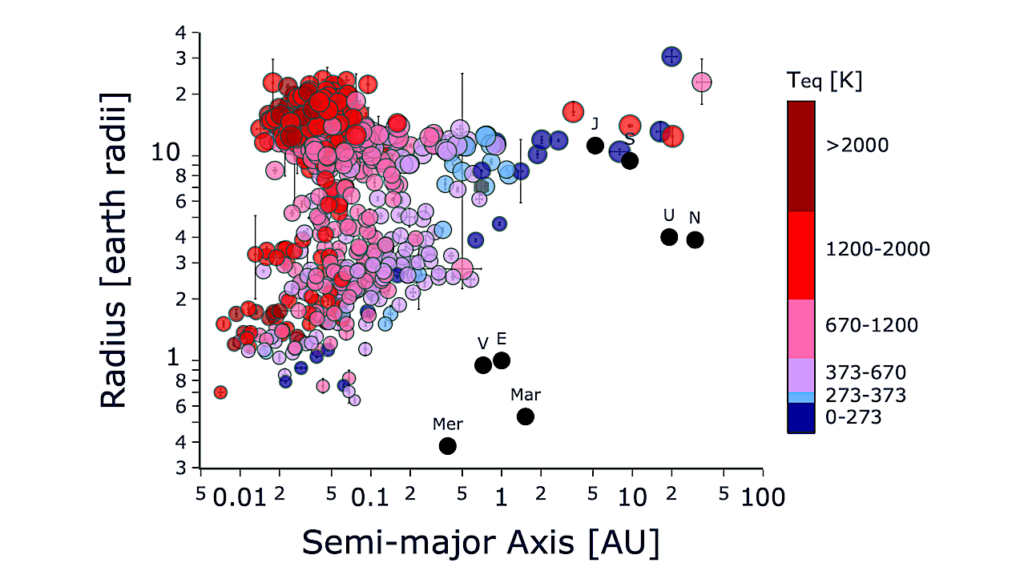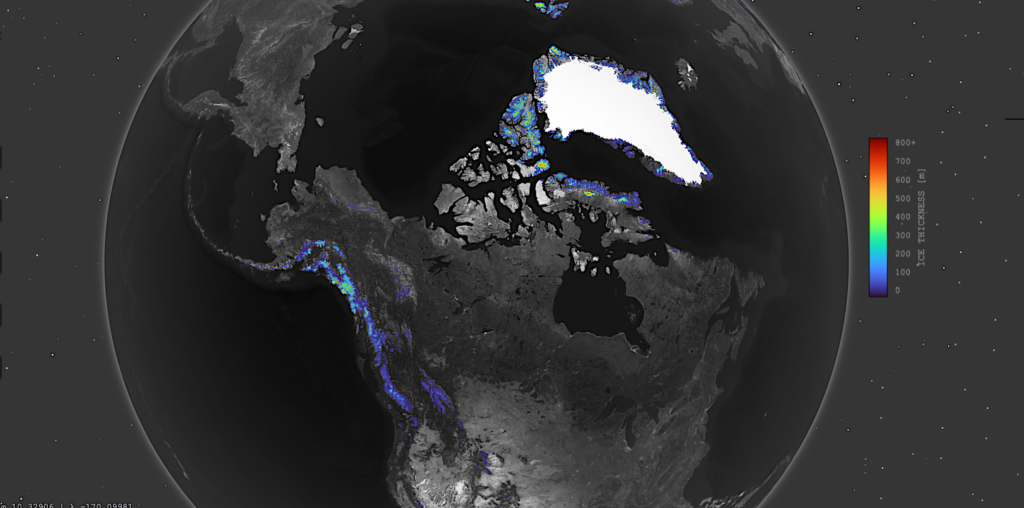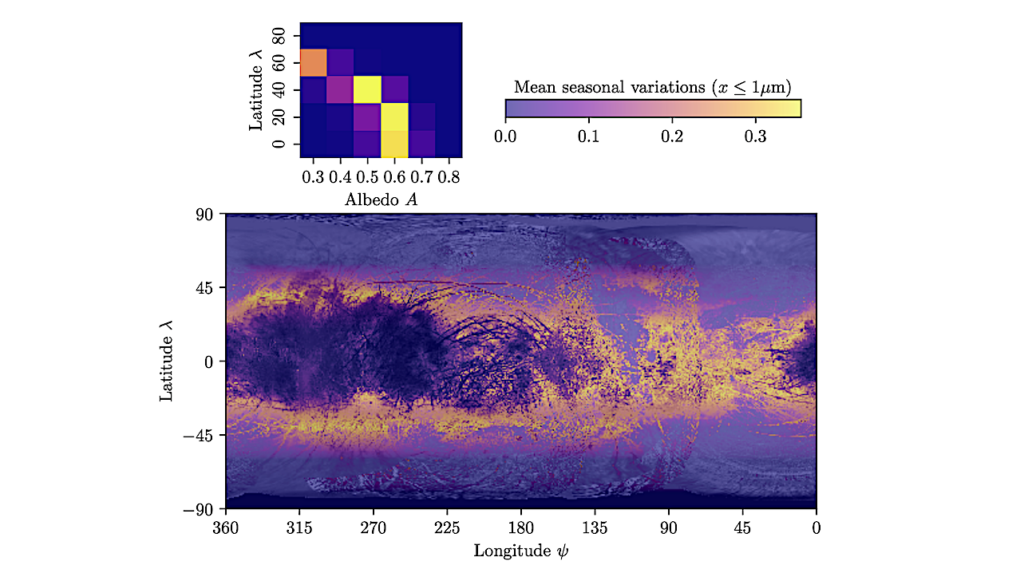Tracking Carbon On Our Planet From Orbit

Whether in plants or animals, greenhouse gases or smoke, carbon atoms exist in various compounds as they move through a multitude of pathways within Earth’s system.
That’s why NASA’s Plankton, Aerosol, Cloud, ocean Ecosystem (PACE) mission – scheduled to launch in January 2024 – was designed to peer down at Earth from space to see those many forms of carbon in a way no other satellite has done before by measuring colors not yet seen from the vantage point of space.
“PACE is standing on the shoulders of some giants, but previous and current satellites are limited in how many colors of the rainbow they can actually see,” said Jeremy Werdell, project scientist for the PACE mission at NASA’s Goddard Space Flight Center in Greenbelt, Maryland.
Although one of the primary goals of the mission is to measure the colors on the ocean surface, in the 420 miles (676.5 kilometers) between PACE in orbit and sea level are parts of the complex carbon web that the satellite will also be able to monitor.
The connection between major wildfires and the subsequent explosion of phytoplankton production is an example of the events NASA’s upcoming Plankton, Aerosols, Clouds, and ocean Ecosystem (PACE) mission will help investigate. PACE’s suite of instruments will allow scientists to get a clearer picture of carbon as it links land use and fires, atmospheric aerosols and marine communities. Credit: NASA’s Goddard Space Flight Center
Atmosphere
From PACE’s location in space, one of the nearest forms of carbon to detect could be the wispy plumes of smoke and ash rising into the atmosphere from fires. Carbon is a key building block of much life on Earth, including plant life. When burned, the vegetation’s carbon-based molecules transform into other compounds, some of which end up as ash in these plumes.
The instruments on PACE will be able to monitor these smoky clouds, as well as other atmospheric aerosol particles, measuring their characteristics including the relative amount of smoke in different places. Combinations of these measurements made by PACE’s two companion polarimeter instruments, SPEXone and the Hyper-Angular Rainbow Polarimeter-2 (HARP2), and the detailed color measurements of the smoke made by the Ocean Color Instrument (OCI) will also help scientists identify what was burnt.
“Each instrument brings something different,” said Andy Sayer, PACE’s project science lead for atmospheres at NASA Goddard. “Putting them all together though, you’re getting the most information.” Sayer is also a senior research scientist for the University of Maryland Baltimore County.
These measurements help scientists understand more about the balance between the incoming energy from the Sun, the outgoing energy from Earth, and where it may be absorbed in between by things in the atmosphere like these smoke plumes. Even at a local level, PACE can provide information about how smoke affects air quality, impacting communities that may be near fires.
Land
Peering through the smoke particles and other aerosols, PACE can also tell us about the health of terrestrial plants and trees. Even after a devastating wildfire, fresh green plant life begins to grow and thrive. With more spectral bands and colors to see from the upcoming satellite, scientists will be able to understand what kinds of plants are recovering from fires over the years.
“In a time where we’re experiencing unprecedented climate change, we need to be able to understand how global vegetation responds to its environment,” said Fred Huemmrich, research associate professor at the University of Maryland, Baltimore County, and a member of the PACE science and applications team.
PACE will be able to monitor the different shades of colors in vegetation, and plant color can be an indicator of health. Just as house plants begin to fade to yellow if they haven’t been watered enough, plant life around the globe changes color as it experiences stress. Healthy plants take up carbon in the form of carbon dioxide as part of photosynthesis, while unhealthy plants that can’t complete photosynthesis leave the carbon dioxide roaming around the atmosphere. Given that carbon dioxide is a greenhouse gas, these measurements also play a significant role in understanding climate change in greater detail.
By measuring a full spectrum of color, PACE will view tiny changes in pigment to detect how plants are responding to stressors, helping scientists learn whether they are utilizing the surrounding carbon or not. Previously, these colors were primarily viewed in field studies of specific areas. Stressors like droughts were inferred using weather data, but covering large expanses was difficult.
“For the first time, we’ll really be able to look at changes in the health of plants over the globe,” Huemmrich said. “It will dramatically improve our understanding of how ecosystems function and how they respond to stress.”
Ocean
From plants on land to organisms in the ocean, PACE will view the expanses of water on Earth to measure phytoplankton – the P in its name. With its ability to measure a wide spectrum of colors, PACE will now not only be able to see more across the surface of the ocean but will also help scientists differentiate between phytoplankton species.
“It’s like you were making a painting with really coarse brushes, and now you have thin, fine brushes that help explain so much more in greater detail,” said Ivona Cetinić, an oceanographer in the Ocean Ecology Lab at NASA Goddard.
Phytoplankton, small organisms that live on the surface of the ocean, play a critical role in the food chain and the global carbon cycle. Each type of phytoplankton provides a different pathway in that expansive web of routes that carbon can take, all depending on the characteristics of the plankton. One pathway may lead to the carbon becoming food for a larger species, while another may lead to carbon becoming waste, sinking deeper into the ocean.
Scientists conducting field work have found that types of phytoplankton vary slightly in color and have identified these phytoplankton on small scales. PACE’s ability to measure a full spectrum of color will help scientists tell the difference between phytoplankton on a global scale by seeing more of these colors, deepening the understanding of carbon pathways and quantities.
Though one of PACE’s key goals is to view the ocean, its line of sight looks over the atmosphere and land as well. With these expansive observations, and the massive quantities of data collected, PACE provides the ability to see in what ways the atmosphere, land, and ocean are connected, including with the complex web of carbon pathways.
“I’m energized for this opportunity for discovery that this observatory is offering,” Werdell said. “I have every expectation the world is going to do great things with these data.”
Astrobiology








